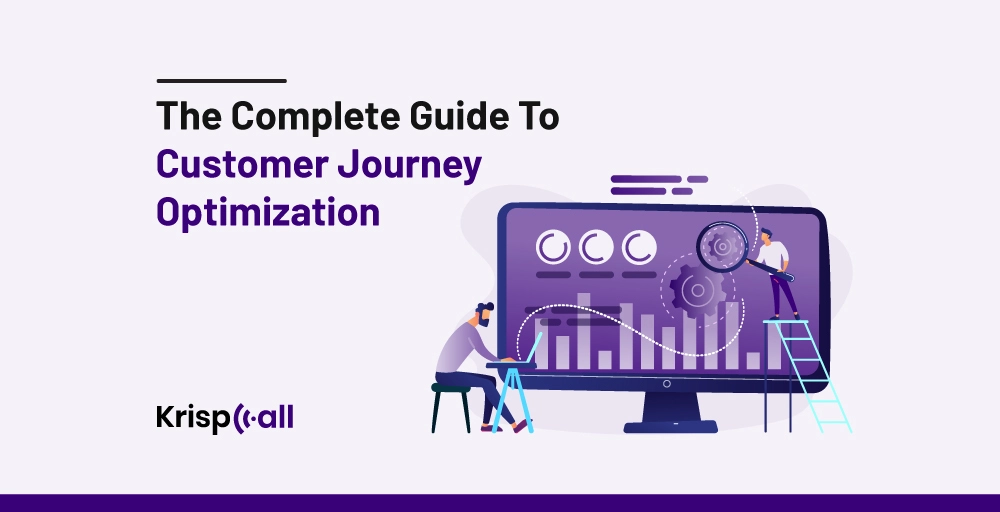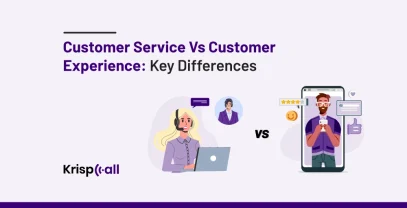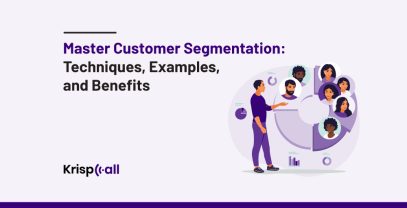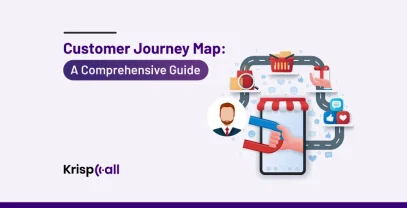Do you wish you could get inside your customer’s head and understand their needs better?
A well-mapped customer journey is like a roadmap to your customer’s mind.
Research shows there is a rise in revenue by 84% who aim to enhance their customer experience.
Optimizing the customer journey benefits your business in many ways 😀 from improved customer satisfaction to enhanced brand reputation.
This ultimate guide to customer journey optimization will show you how to map your customer’s journey, identify pain points, and implement improvements that drive results.
Get ready to watch your customer satisfaction and sales soar!
🔑 Key Highlights
- Customer Journey Optimization is the strategic process of enhancing the touchpoints and customer interaction throughout the entire customer journey to enhance customer experience.
- Improved customer satisfaction, increased customer loyalty, higher conversion rates, and enhanced brand reputations are some of the benefits of CJO, whereas the complexity of client interactions across multiple channels, challenges of gathering and combining data from several touchpoints, etc are the challenges of the CJO.
- The 4As of customer Journey optimization include Awareness, Acquisition, Activation, and advocacy.
- The six key metrics for customer journey optimization are Customer Satisfaction Score(CSAT), Conversion Rate, Net Promoter Score(NPS), Customer Effect Score(CES), Customer Churn Rate, and Customer Lifetime Value(CLV).
- KrispCall is the recommended platform to enhance the overall customer experience and optimize the customer journey at every stage with ease.
What is customer journey optimization?
Customer Journey Optimization (CJO) is the strategic approach of enhancing and analyzing every touchpoint and interaction a customer has with a company throughout their journey. It involves understanding and mapping the customer’s journey across multiple touchpoints and then systematically improving the interactions to boost customer experience, and satisfaction, and, ultimately enhance business performance.
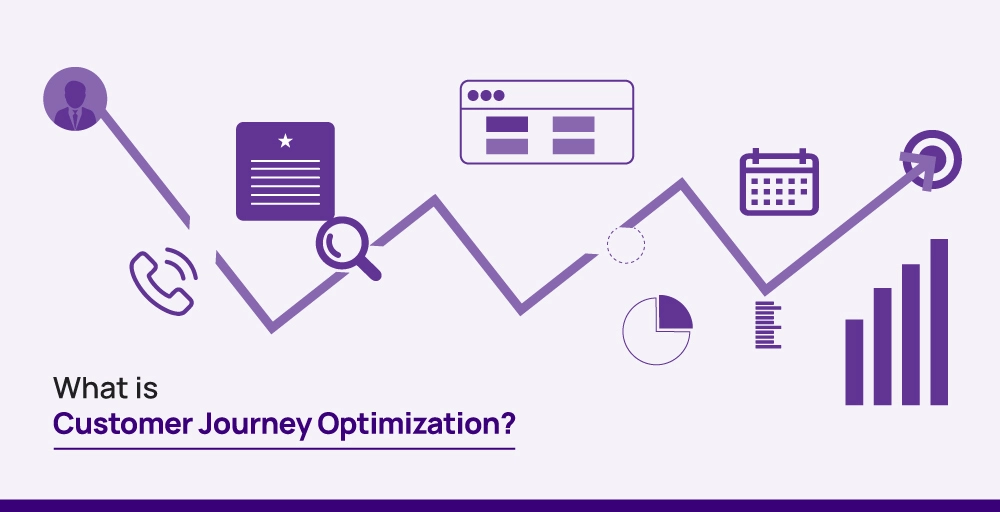
A CJO’s ultimate goal is to meet and exceed client expectations across all stages, from brand awareness to advocacy and loyalty. Unlike isolated marketing, it provides a cross-functional and customer-centric strategy.
For example, A retail company noticed a decline in sales during online checkout. Due to the complexity of the process, customers became frustrated and abandoned their carts. They observed an increase in customer happiness and conversions by introducing guest checkout, streamlining the process, and providing more payment alternatives.
Some of the benefits of customer journey optimization include:
- Improves customer satisfaction: Businesses can improve customer satisfaction by addressing customer pain points, streamlining processes, and delivering personalized experiences.
- Increases customer loyalty: When customers have a positive experience with a company, they become more loyal to it, which promotes repeat business and long-term relationships.
- Higher conversion rates: By optimizing the customer journey, sales processes can be more efficient, friction can be reduced, and leads are more likely to convert.
- Enhances brand reputation: Providing customers with a positive customer experience at every stage will increase the credibility and trust of the brand.
How to optimize customer journey?
The customer journey can be optimized by considering several factors and using the right tools to enhance customer loyalty and business growth.
Here’s a detailed process on how to optimize customer journey:
1. Understanding the customers
Understand and explore the preferences, demands, and behaviors of the customers at every phase of their journey and obtain essential insights into the factors that influence their decision-making process. By taking the time to fully understand them, businesses may better align their experience and offer with the needs of their customers.
2. Analyze and identify issues
Identify any friction points, inefficiencies, or pain points that might abstract the seamless advancement of the client experience by carefully examining these interactions. Finding and fixing these problems can improve the overall customer experience whether it is lengthy checkout processes, inconsistent messaging across channels, or inadequate customer assistance.
3. Strategize for improvement
Once issues have been discovered, companies must create a thorough plan to deal with them. By using a strategic approach and methods, businesses can resolve pain points, improve customer experience, and ultimately achieve success. Businesses may ensure long-term success by optimizing the customer journey and paving the road for continuous growth through strategic planning and execution.
4. Implement and monitor
Businesses need to act to execute the solutions and improvements found across relevant touchpoints after creating a thorough plan. Introducing new technology, streamlining procedures, and educating employees are involved in providing a smooth and customized experience for customers.
Businesses can evaluate the effects of their implementation and make the required adjustments in real time by monitoring Key Performance Indicators(KPIs), getting customer feedback, and analyzing data insights.
5. Tools and techniques
Companies looking to optimize customer journeys need to have essential tools and techniques. With advanced data analytics tools and user-friendly CRM solutions, companies can collect and analyze large volumes of customer data, allowing them to better understand the preferences, habits, and problems of their customers.
Utilizing these tools and tactics can enhance customer satisfaction and loyalty by streamlining strategies, customizing interactions, and resolving issues as they arise.
What are the 4As of the customer journey?
Implementing 4A’s in your businesses can help to optimize the entire customer lifecycle. The 4A’s of the customer journey are:
- Awareness: The awareness stage is crucial as this is the initial interaction between a customer and a brand. The goal is to grab the interest and create curiosity to establish a foundation for further participation.
- Acquisition: At this stage, the customer takes action to purchase goods or services from the brand. This includes completing purchases, committing to a subscription, or carrying out any other actions that mark the start of the customer’s interaction with the company.
- Activation: After purchasing the goods, the customer moves to the activation stage, where they begin utilizing or experiencing what they have obtained. Ensuring the customer has a seamless and positive initial experience with the brand is the main goal of this stage as it promotes continued loyalty and engagement.
- Advocacy: Satisfied and happy customers become advocates for the brand, promoting it and its growth through recommendations, testimonials, and word of mouth. Establishing customer advocacy is crucial to maintaining long-term partnerships and economic success.
What are the 5 steps to map the customer journey?
Here’s a step-by-step guide to mapping the customer journey:
1. Define your target audience
Defining your target audience involves identifying the specific demographic or segments that your brand aims to reach and serve. You may develop more precise and thorough buyer personas by having in-depth knowledge of the demands, tastes, and demographics of your target audience.
By using these customer personas to represent various client types within your target audience, you can customize the customer journey mapping to meet their specific needs and expectations.
2. Identify touchpoints
The touchpoints include a broad range of contacts such as website visits, social media involvement, email correspondence, and customer service interactions from the initial phase to post-purchase support. Businesses can identify the areas where they may build meaningful connections and improve the customer experience by carefully identifying these touchpoints, which provides them with a thorough customer journey map.
This stage establishes a foundation for a smooth and unified journey that meets consumer expectations and gives favorable results for the client and company.
3. Map the stages
Outlining the several stages a consumer takes from first awareness to purchasing decisions is part of customer journey mapping. This stage consists of awareness, consideration, purchase, retention, and advocacy.
Through a mapping journey, businesses can tailor their strategies and experiences to meet the needs and expectations of their customers throughout their journey, offering insightful information about customer decision-making processes.
4. Plot the customer’s actions and emotions
Plotting the customers’ actions and emotions is not just figuring out the different touchpoints and exchanges that customers have but also getting to know their motives and feelings at every stage of the journey. Businesses can learn about the intent and preferences of their customers by examining the customer activities.
Companies also can find the chances to increase good emotions, lessen bad experiences, and ultimately create more meaningful and engaging experiences with customers by tracking both emotions and actions throughout the customer journey mapping.
5. Identify pain points and opportunities
Identify the pain points of the customers such as long wait times, confusing website navigation, or poor customer service. Organizations can enhance the overall customer experience by pinpointing these problems after they are identified.
On the other hand, opportunities represent the areas where organizations can enhance their products to better serve customers or go beyond what they expect. Hence, businesses can create focused plans to improve the customer journey and eventually increase happiness, loyalty, and retention by recognizing both pain points and opportunities.
Key metrics for customer journey optimization
Track the following metrics to gain valuable insights into your customer journey and identify areas for improvement:
Customer Satisfaction Score(CSAT)
CSAT metric measures the level of customer satisfaction level with their interactions at different touchpoints of the journey. This survey asks customers to showcase their satisfaction level on a scale of 1-5 stars and also may include optional open-ended questions for feedback.
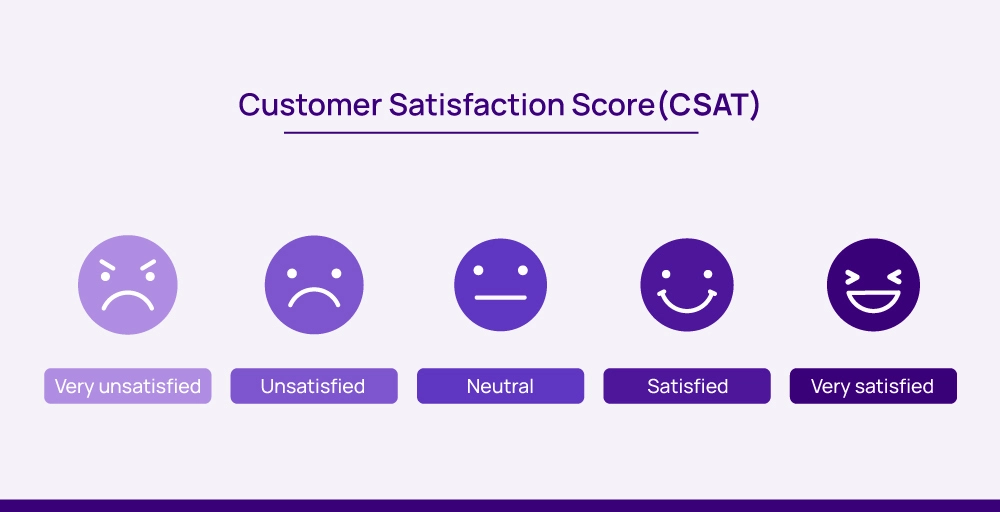
The high CSAT scores indicate that the journey was satisfactory and that the customers had a positive experience. Businesses can take proactive steps to improve the overall happiness and loyalty of customers by identifying the areas of improvement in the customer journey by monitoring CSAT scores.
Conversion Rate
The percentage of visitors to your website or app who completed the desired action such as making a purchase, or signing up for a free trial at various stages of the customer journey is tracked by this metric. Businesses can learn more about the effectiveness of marketing efforts, website design, and the whole sales process by tracking conversion rates.
The low conversion rates help businesses point out the areas for improvement and help improve in those areas, whereas high conversion rates mean that an organization’s tactics are successfully attracting clients and converting them clients to take the desired actions.
Hence, by examining conversion rates at different stages of the customer journey, businesses can pinpoint the areas for improvement, enhance their tactics, and ultimately drive higher customer satisfaction levels and greater revenue.
Net Promoter Score(NPS)
Net Promoter Score metric measures customer loyalty which is beyond simple happiness. It measures how likely customers are to recommend your brand to others. According to their answers, customers are divided into three groups: Promoters (rating 9-10), Passive (rating 7-8), and Detractors (rating 0-6).
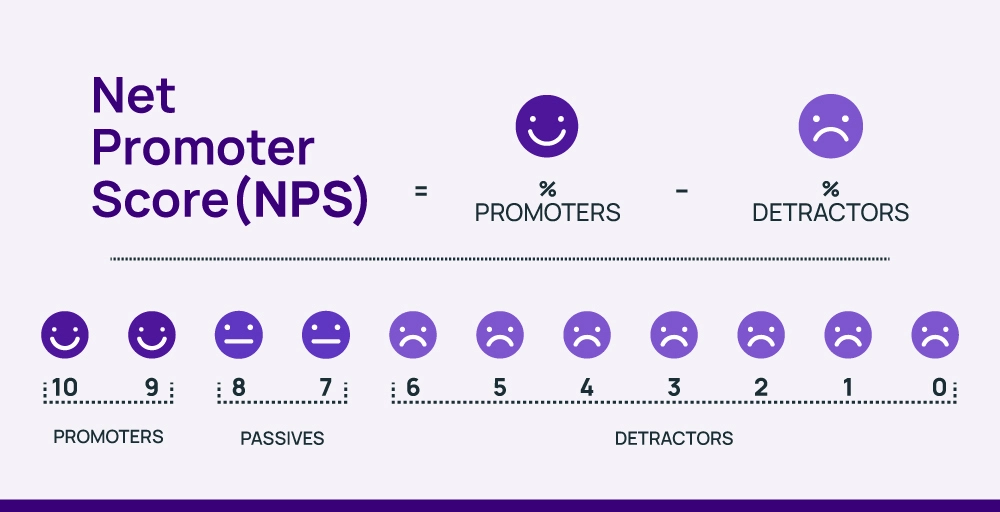
A high NPS indicates that customers will strongly advocate for the company and will spread positive word of mouth about it. Also, businesses may choose potential brand ambassadors who spread favorable suggestions and measure customer loyalty by NPS scores, ultimately contributing to brand growth and success.
Customer Effect Score (CES)
This metric ensures customers can complete tasks or resolve issues when interacting with a brand with ease. Surveys by CES ask customers to rate their level of agreement with statements like “It was easy to find the information I needed ”.
The low CES score denotes a seamless and easy-to-use customer journey, where clients face fewer obstacles in completing their desires. Businesses can increase overall customer happiness and loyalty by identifying the areas of poor customer experience that need to be improved by measuring the CES score.
Customer Churn Rate
This metric expresses the proportion of customers who leave a brand within a given time. It shows how quickly the brand is losing its customers. Strong client retention and satisfaction with the brand’s product are indicated by a low customer churn rate. Businesses can use churn rate monitoring to pinpoint any problems or areas where the entire customer experience needs to be improved.
Customer Lifetime Value (CLV)
It is a key indicator that helps to project the total amount of money a consumer is expected to generate throughout their relationship with the brand. It determines the potential value that each customer can offer to the company, considering various factors like average purchase value, frequency of purchases, and customer retention rate.
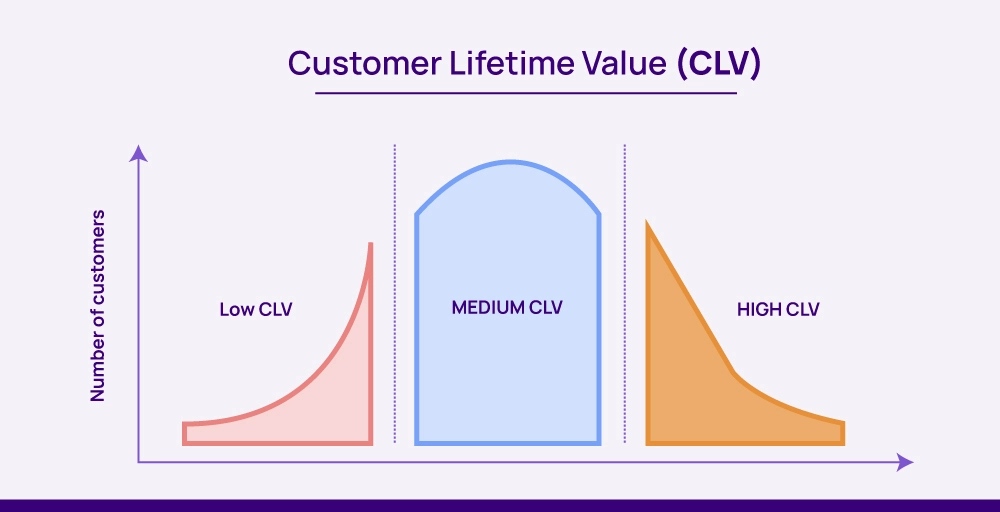
A high CLV value is indicative of a strong and profitable customer relationship, signaling that the brand is successful in providing value and satisfying the needs of customers in the long run. Also, monitoring CLV enables companies to spot the chances to improve customer satisfaction and strengthen their value offer which in turn results in increased customers.
Connect Every Stage Of Customer Journey With KrispCall Cloud Phone
Despite modern technology, even modern businesses are struggling to optimize their customers’ journeys. As a result, they are losing revenue potential and loyal influencers. One very important reason could be poor call quality.
In recent days, where customer interactions are increasingly digital and remote, maintaining high-quality calls is crucial. So, there is KrispCall, one of the leading cloud phone providers, which helps to optimize the entire customer journey with its crystal-clear call for enhanced satisfaction and actionable insights.
Try KrispCall Now! 👉Book a free Demo.
Wrapping UP!
Optimizing your customer’s journey offers you incredible opportunities 😍 for increased revenue, profits, loyalty, and many other aspects. However, make sure you follow the same procedures every time and are prepared to assist the clients in whatever way they require. Allow them to realize your brand’s potential and use them as pillars to help your brand expand. Try new test methods by conducting A/B testing.
KrispCall is the recommended platform to enhance the overall customer experience and optimize the customer journey 😊 at every stage with ease with its crystal-clear call, unified platform, omnichannel communication, and actionable insights.
FAQs
How can customer journey be improved?
The customer journey can be improved by identifying pain points, simplifying procedures, and providing exceptional experience according to customer needs and preferences.
Why is customer journey optimization important for businesses?
Customer journey optimization is important for businesses because it allows them to improve overall customer experience, leading to increased satisfaction, loyalty, and retention, ultimately driving long-term growth and sustainability.
What are some challenges of customer journey optimization?
Some of the challenges of customer journey optimization are:
- Complexity of client interactions across many platforms
- Challenges of gathering and combining data from several touchpoints
- Identifying and addressing specific pain points throughout the journey
- Ensuring coherence and consistency among various channels and stages
- Organizing departments and internal processes to assist in optimizing efforts
- Measuring and recognizing optimization initiatives accurately
- Adapting to shifting market conditions and technical dynamics
What are some Key Performance Indicators(KPIs) used to measure customer journey optimization?
Some Key Performance Indicators(KPIs) used to measure customer journey optimization are:
- Customer Satisfaction Score (CSAT)
- Net Promoter Score (NPS)
- Customer Effort Score (CES)
- Website Traffic
- Time Spent on a Website
- App Engagement Metrics
- Conversion Rate
- Customer Churn Rate
- Customer Lifetime Value (CLV)
- Resolution Time
How can businesses use automation to optimize the customer journey?
Businesses can use automation to optimize the customer journey by obeying the following ways:
- Streamlining Repetitive Tasks
- Personalization and Recommendations
- Improved Efficiency and Reduced Errors
- 24/7 Availability
- Increased Agent Efficiency
- Data-driven Decision Making

